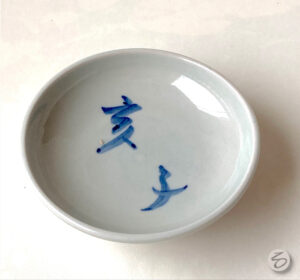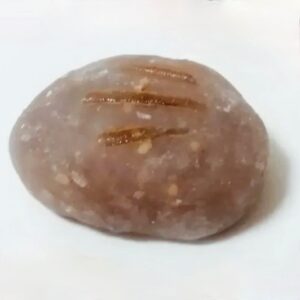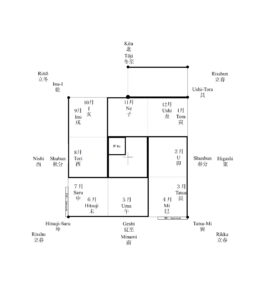Robiraki: Boar and Rat – a preview

Ro-biraki, 炉開, hearth-open, is traditionally celebrated on the first day of Boar after Ri-ttō, 立冬, Start-winter. This is one of the 24 seasonal divisions of the solar calendar, and occurs around November 7. However, it may be tradition has changed the original intention. If the ro is opened on the first Boar Day, it may have been preparation for an observance on the following day, which is the Ne-no-hi, 子の日, Rat’s-day
Robiraki may be akin to New Year’s Eve for the Day of the Rat, Ne-no-hi, 子の日, Rat’s-day, which is the Asian zodiac sign of Sen-ju Kan-non Bo-satsu, 千手観音菩薩, Thousand-hand See-sound Grass-buddha.
The Kanji for ne, 子, has a multitude of readings and meanings. Rat is but one, and of suspect attribution. The Kanji was originally a depiction of a baby with outstretched arms, and legs swaddled. One theory posits that the twelve Asian zodiac signs are based on rice cultivation, and that ne, 子, is rice in its seed form. Kannon is depicted at times holding a baby, which representing Mary and Jesus when Christianity was forbidden in Japan.
In Japan’s Kantō area, around Tōkyō and Chiba, women offer rice to Senju Kannon, asking for healthy milk after childbirth. A special o-ka-shi, お菓子, hon.-sweet-of, for the opening of the ro is I-no-ko mochi, 亥の子餅, Boar’s baby mochi, which is made of the new azuki, 小豆, little-beans, and sugar made into a thick jam formed into balls covered with mochi.

The mochi is translucent revealing the red beans beneath which is likened to the appearance of young boars. Scorched lines are made in the mochi that heighten the look of a ‘boar’. Also, the scorching of the mochi has an appetizing fragrance, and the act of scorching adds Fire to the new fire in the newly opened ro. In reality, beginning something on the last day of a cycle, carries the occasion into the next cycle – I no Ko, 亥の子, is an example of that concept. The Boar is the last of the twelve Asian zodiac signs, and Rat is first of the cycle.
The ro is opened on the first day of the I after Rittō. It seems that tradition has the celebration of the return of the ro, is for the Boar, whereas it may be preparation for celebration of Kannon.
 For further study, see also: Ro: The Sunken Hearth Collection
For further study, see also: Ro: The Sunken Hearth Collection

